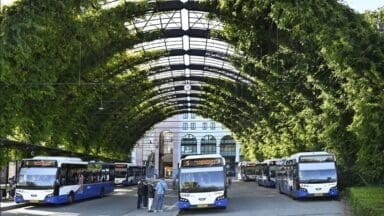
The substantial steel pergola, elegantly adorned with wisteria, offers travellers a sheltered respite to await their bus arrival. Wisteria, chosen for longevity and resilience against disease and drought, not only provides much needed urban cooling but also contributes to the biodiversity of the revitalised city centre.
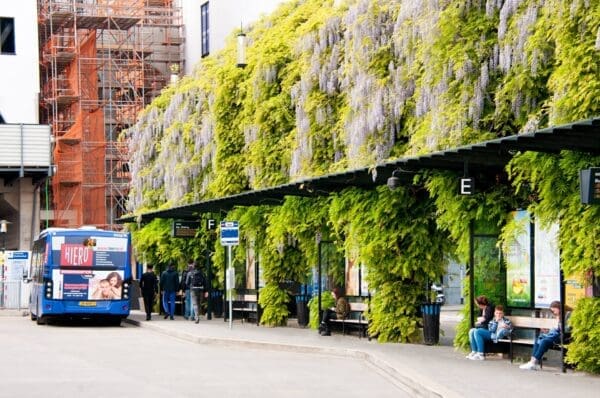
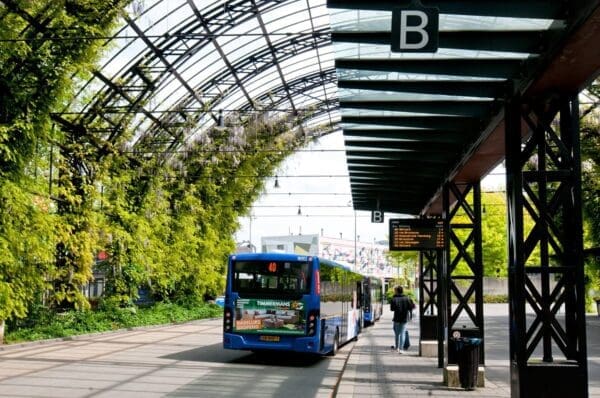
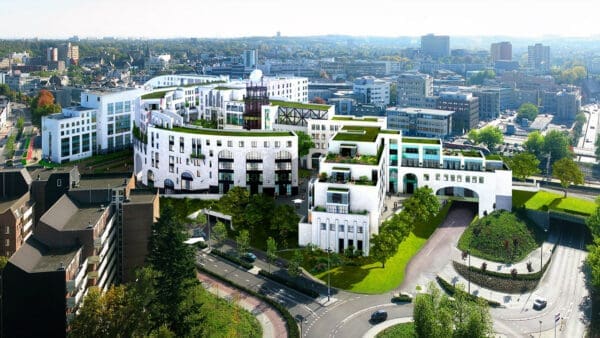
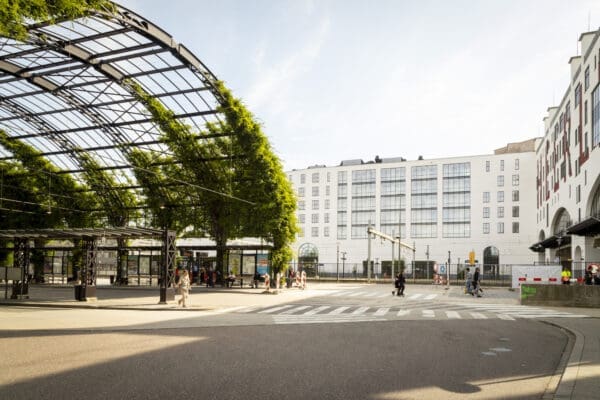
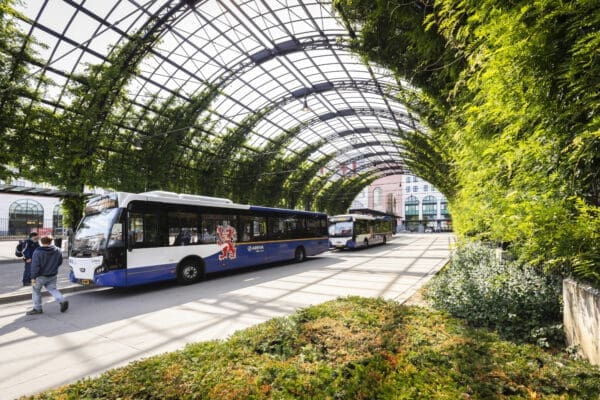
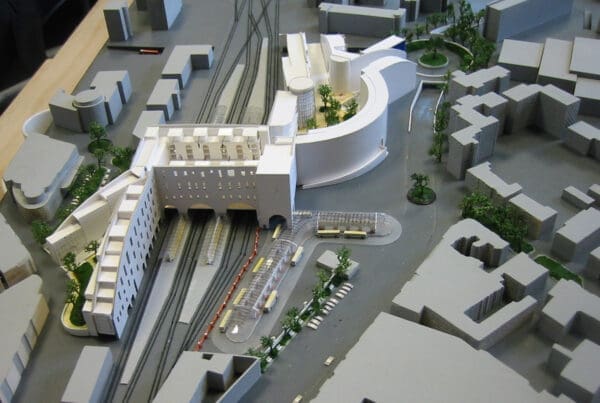
The urban regeneration scheme, designed by Dutch artist Michel Huisman in collaboration with StudioSK, sought to revitalise the decaying city centre of Heerlen, a former mining town in the Netherlands. Once a prosperous metropolis in the early 20th century, Heerlen’s decline accelerated with the closure of its mines in the 1970s. The city centre subsequently became a hub for crime and drug trafficking, epitomising its decline.
In 2003, Huisman presented a visionary concept for the station area, drawing inspiration from the city’s Roman heritage. Embraced by local officials as a lifeline for Heerlen, the plan aimed to bridge the divide created by the train tracks. The Maankwartier design incorporates a train station, railway bridge, 90,000 square metres of retail premises, offices, residential, and parking spaces. With a nod to Mediterranean aesthetic, the design features arches, arcades and loggias.
Green spaces are interspersed throughout the project, including a series of mature Sophora japonica trees planted in specially designed mounds of lightweight soil. These trees are situated atop supermarkets and underground garages. The square, designed as a water collection basin, ensures the trees have access to water through a capillary irrigation system.
This project is an interesting example of a crossover between art, architecture, and urban planning resulting in a truly innovative and captivating outcome. In addition to one of the nicest bus stations we have ever seen…

